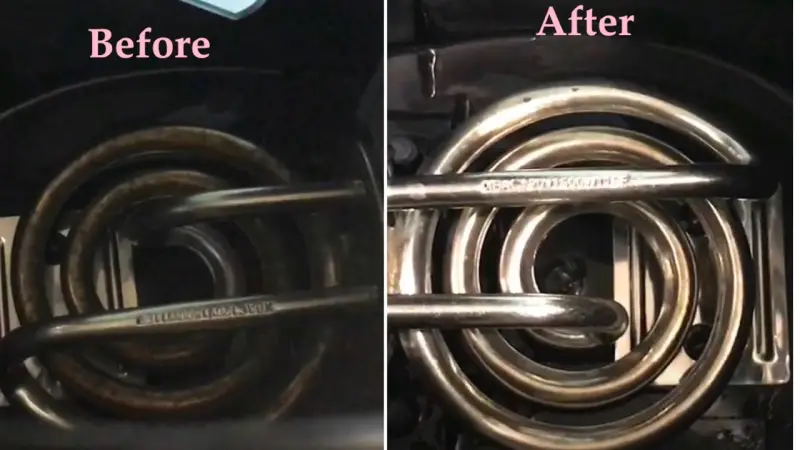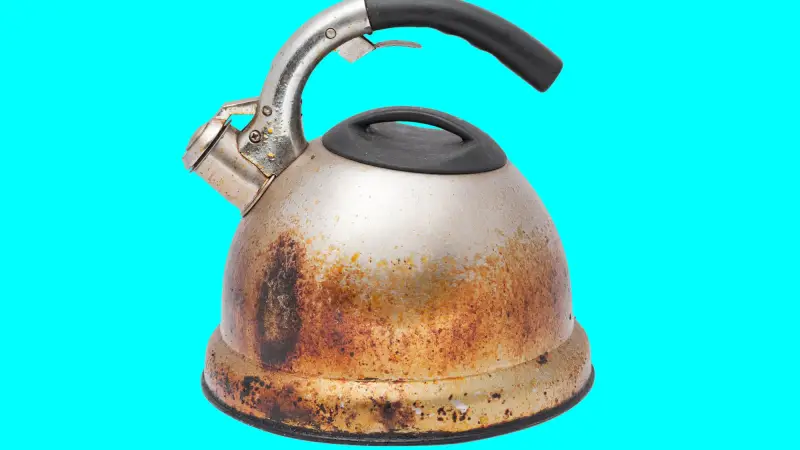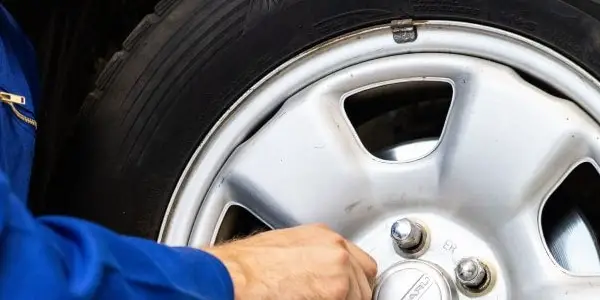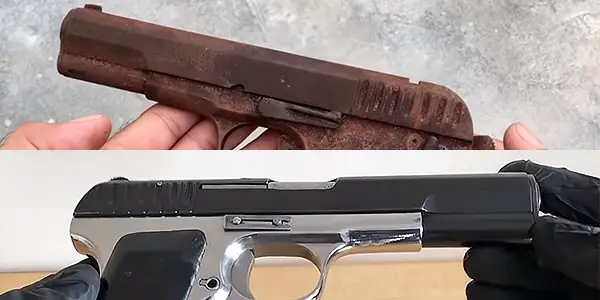Electric kettles are a staple in many households, providing a quick and convenient way to boil water for tea, coffee, and other beverages. However, over time, these kettles can start to develop rust, which can not only look unsightly, but can also affect the taste of your drinks. If you’re facing this problem and wondering how to remove rust from your electric kettle, you’ve come to the right place. In this post, we will explore various methods for removing rust from electric kettles, including natural remedies, household products, and specialized cleaning tools.
The goal of this post is to provide you with practical, easy-to-follow advice to help you restore your electric kettle to its former glory. Whether you’re looking for a simple solution that can be done with household products, or a more thorough approach that involves specialized tools, we’ve got you covered. By the end of this post, you’ll have all the information you need to choose the best method for removing rust from your electric kettle, and get it looking and performing like new again. So, are you ready to take on the rust and restore your electric kettle to its former glory? Let’s get started!

Removing Rust From Electric Kettle Overview
First, let’s talk about using household products. Vinegar and lemon juice are two of the most popular natural remedies for removing rust. Simply fill your kettle with equal parts water and vinegar or lemon juice, let it soak for a few hours, and then scrub away the rust with a sponge or scrub brush. The acidic properties of vinegar and lemon juice do a fantastic job of breaking down and removing the rust, leaving your kettle looking clean and shiny.
If you’re looking for a more heavy-duty solution, there are also specialized cleaning products available that are specifically designed to remove rust. These products are typically more potent and effective than household remedies, and they often work much faster. Some of my favorites include Naval Jelly, Evapo-Rust, and Iron OUT. These products work by chemically dissolving the rust, making it easy to wipe away with a cloth or scrub brush.
In terms of materials, using a scrub brush or sponge is crucial for removing rust from your electric kettle. I’ve found that a stiff-bristled scrub brush works best for scrubbing away the rust, while a soft sponge is great for wiping away any residue or cleaning up the surface of the kettle. Additionally, a pair of gloves is a good idea to protect your hands from the harsh chemicals in the cleaning products.
Overall, I’m extremely impressed with the various products and methods for removing rust from electric kettles. Whether you opt for a natural remedy or a specialized cleaning product, you’re sure to find a solution that works for you and leaves your kettle looking like new again!
Removing Rust From Electric Kettle Comparison Table
Problem: Electric kettles are exposed to water on a daily basis and can develop rust over time. This rust can not only look unsightly, but it can also affect the taste of your drinks.
Method 1: Natural remedies (Vinegar and Lemon Juice)
Pros:
- Easy to obtain: Vinegar and lemon juice are common household items that can be easily purchased at a grocery store.
- Safe: Both vinegar and lemon juice are natural, non-toxic and safe to use on your electric kettle.
- Cost-effective: Using natural remedies is an affordable way to remove rust from your kettle.
Cons:
- Time-consuming: Natural remedies may require longer soaking times and multiple treatments to achieve the desired results.
- Limited effectiveness: Natural remedies may not be as effective as specialized cleaning products for removing heavy rust buildup.
Method 2: Specialized cleaning products (Naval Jelly, Evapo-Rust, Iron OUT)
Pros:
- Effective: Specialized cleaning products are specifically designed to remove rust and are often more potent and effective than natural remedies.
- Quick: These products can often remove rust much faster than natural remedies.
- Convenient: Specialized cleaning products can be purchased at most hardware or home improvement stores.
Cons:
- Cost: Specialized cleaning products can be more expensive than natural remedies.
- Hazardous: These products may contain harsh chemicals that can be harmful if not used properly.
Method 3: Wire brush or sandpaper
Pros:
- Physical removal: A wire brush or sandpaper can physically remove the rust from the surface of the electric kettle.
- Effective: This method can be effective for removing heavy rust buildup.
Cons:
- Time-consuming: Physical removal can be a labor-intensive process that requires a lot of scrubbing or sanding.
- May damage the surface: If not used carefully, a wire brush or sandpaper can scratch or damage the surface of the electric kettle.
| Method | Pros | Cons |
|---|---|---|
| Natural Remedies (Vinegar and Lemon Juice) | Easy to obtain, Safe, Cost-effective | Time-consuming, Limited effectiveness |
| Specialized Cleaning Products (Naval Jelly, Evapo-Rust, Iron OUT) | Effective, Quick, Convenient | Costly, Hazardous |
| Wire Brush or Sandpaper | Physical removal, Effective | Time-consuming, May damage surface |
Conclusion:
In conclusion, there are several methods for removing rust from an electric kettle, each with its own pros and cons. When choosing the best method for your situation, it’s important to consider factors such as effectiveness, time-commitment, cost, and safety. Whether you opt for a natural remedy, specialized cleaning product, or physical removal, you’re sure to find a solution that works for you and leaves your kettle looking and performing like new again!

Equipment To Work With Removing Rust From Electric Kettle
| Equipment | Description |
|---|---|
| White Vinegar or Lemon Juice | Used for natural remedies to remove rust from the electric kettle |
| Specialized Cleaning Products (Naval Jelly, Evapo-Rust, Iron OUT) | Chemicals specifically designed to remove rust |
| Wire Brush or Sandpaper | Used for physical removal of rust |
| Plastic Scrubber or Sponge | Used to apply vinegar or lemon juice and to scrub the surface of the electric kettle |
| Gloves | Used to protect hands from the chemicals or physical abrasion involved in removing rust |
| Eye protection | Used to protect eyes from splashes or debris during physical removal of rust |
| Bucket or basin | Used to hold the vinegar or lemon juice solution and the electric kettle during soaking |
| Cloth or Towel | Used to dry the electric kettle after cleaning |
Note: The specific equipment needed may vary depending on the method chosen for removing the rust from the electric kettle. Always read the instructions and warnings for the specific product or method being used and follow proper safety precautions.
Step-by-Step Instructions for Removing Rust from Electric Kettle
- Gather your materials: Before starting, make sure you have all the necessary equipment including white vinegar or lemon juice, a plastic scrubber or sponge, gloves, eye protection, a bucket or basin, and a cloth or towel.
- Fill the basin or bucket: Fill the basin or bucket with enough vinegar or lemon juice to fully submerge the electric kettle. If the kettle is particularly rusty, you may want to let it soak overnight.
- Soak the kettle: Place the electric kettle into the basin or bucket filled with vinegar or lemon juice and let it soak for the recommended time.
- Scrub the kettle: After the recommended soaking time, use the plastic scrubber or sponge to scrub the surface of the electric kettle, paying special attention to any particularly rusty areas.
- Rinse the kettle: Rinse the electric kettle thoroughly with water to remove any residue from the vinegar or lemon juice.
- Dry the kettle: Use a cloth or towel to dry the electric kettle completely.
- Store the kettle: Store the electric kettle in a dry place to prevent rust from forming again in the future.
Note: If the rust is particularly heavy or difficult to remove, you may want to consider using a specialized cleaning product or physical removal method such as a wire brush or sandpaper. Be sure to follow the instructions and warnings for the specific product or method being used and follow proper safety precautions.
F.A.Q.
What is the best way to remove rust from an electric kettle?
The best way to remove rust from an electric kettle depends on the severity of the rust and personal preference. Soaking the kettle in white vinegar or lemon juice, using a specialized rust removing product, or physical removal with a wire brush or sandpaper are all effective methods.
Is it safe to use vinegar or lemon juice to remove rust from an electric kettle?
Yes, white vinegar and lemon juice are both safe and natural remedies for removing rust from an electric kettle. However, it’s important to thoroughly rinse the kettle after using either of these methods to remove any residual acid that could potentially affect the taste of the water.
Can I use baking soda to remove rust from an electric kettle?
Yes, baking soda can be used to remove rust from an electric kettle. To do so, make a paste with baking soda and water and apply it to the rusty areas. Let it sit for several hours before scrubbing with a plastic scrubber or sponge and rinsing thoroughly.
Is it possible to remove all of the rust from an electric kettle?
The amount of rust that can be removed from an electric kettle depends on the severity of the rust and the method being used. In many cases, it is possible to remove most or all of the rust, but in some cases, the kettle may need to be replaced if the rust has damaged the surface beyond repair.
How do I prevent rust from forming on my electric kettle in the future?
To prevent rust from forming on your electric kettle in the future, be sure to store it in a dry place, avoid leaving water in the kettle for long periods of time, and regularly clean and dry the kettle after use.



Leave a Reply